#aetolia-acarnania
Photo
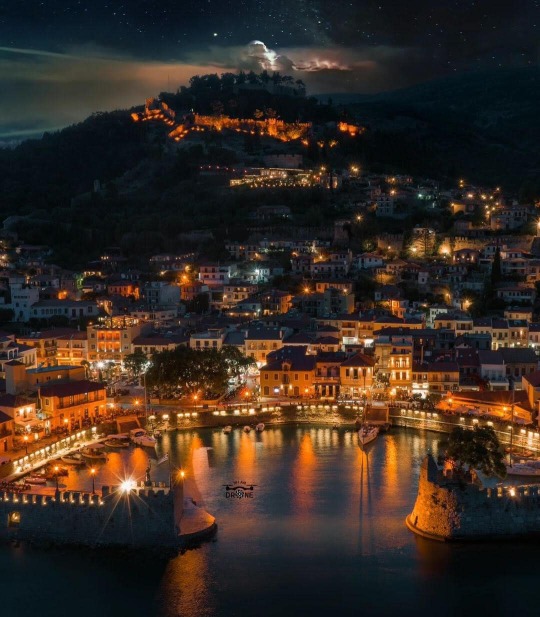
Greece, Nafpaktos by hi_i_am_drone on Instagram.
#greece#europe#travel#drone photography#night photography#town#places#harbor#bird´s eye view#nafpaktos#aetolia-acarnania#sterea hellas#central greece#mainland
342 notes
·
View notes
Text
Note: The characters presented there are inspired by @allbeendonebefore's work and has no intention to mock you, rather to entertain you. Without further ado, let's move on.
In case you don't know, I love drawing and making headcanons about the personifications of modern greek cities and towns for various reasons, mainly because I want to promote the modern image of my country, as opposed to the ancient one that most foreigners are familiar with.
This time, I made 10 personifications, the two of them representing a regional unit (I will explain later why it's two and not one) and the rest representing some towns of that regional unit.
The regional unit, in question, is:

So, why Aetolia-Acarnania of all regions? Well, partly because my mom is from there and because almost nobody on the internet talks about it, so I wanted to make it more well-known.
I tried to seach some information online and I couldn't find much, other than that the Ancient Greeks considered these people barbarians, because they were war-like and didn't produce works of art.
Anyways…
Artistic choices: Aetolia and Acarnania's appearances were based from my uncles'. Specifically, Acarnania looks exactly like the one I based him from. Aetolia not do much, except from the face. None of my uncles have shoulder-length hair, I just added it to give him a more savage look based on the idea that the Ancient Greeks had about these people (which still exists today, but we will discuss it later). It was kinda difficult, because I'm not used on drawing male characters and even when I do, I give them a "cute-boy" look, so it was challenging but nice to draw something different for once. Also, regarding the choice of the color. I thought of all the colours that Hapo used in her @athensandspartaadventures: green, red, lots of purple and a little bit of brown. I wanted to choose a colour that she hasn't utilised and the first one to come to my mind was mustard yellow. Sooner or later, I will come up with an actual good explanation (or I might use a different colour).
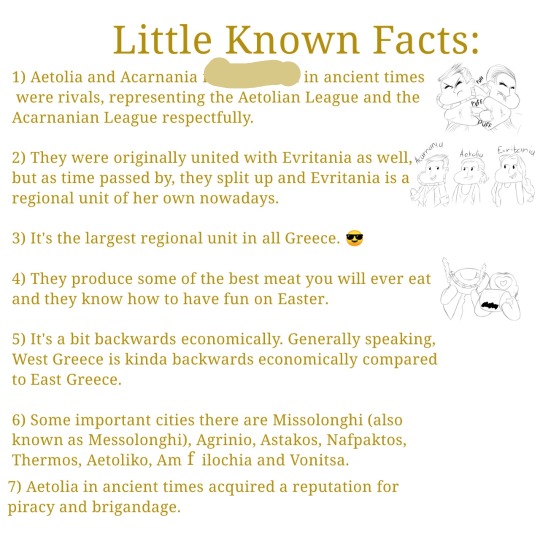
Now, enjoy some photos I took while I was on vacation.
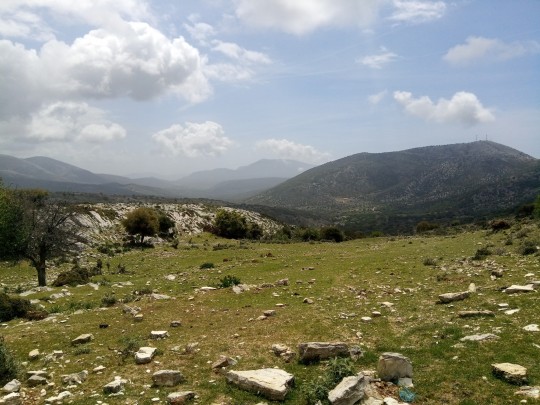
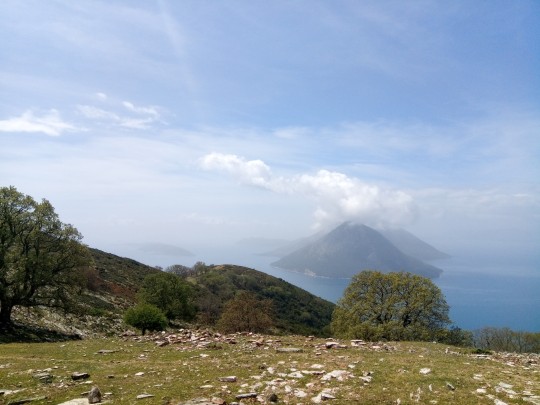

The view from above the mountains.
Honestly, the trip there feels like visiting South France, since it's full of green. A small tip for all the foreigners who are in Greece right now, but they wish they were in South France: just visit Aetolia-Acarnania! It's the same thing! But better! 🙃
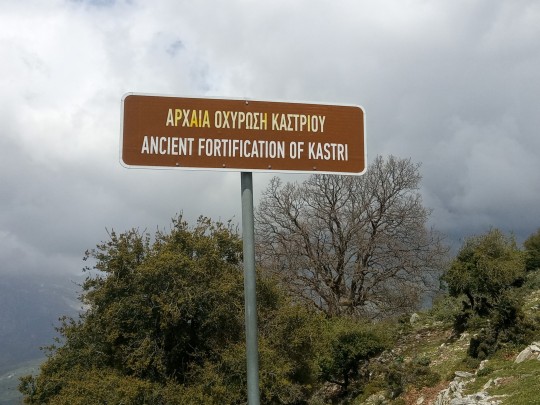


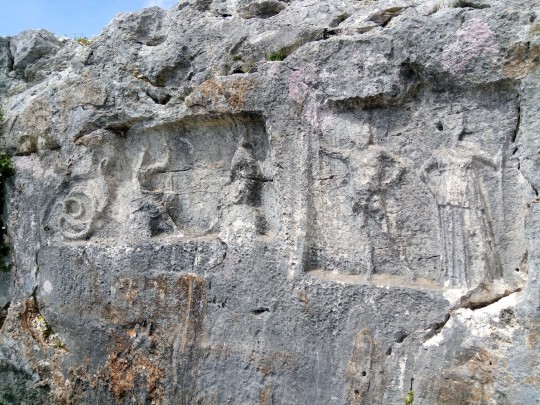
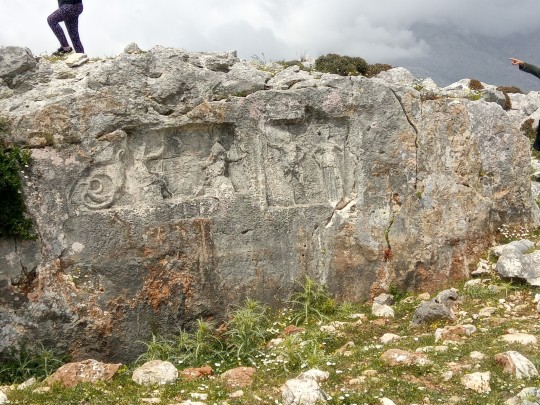
The Ancient Fortification of Kastri.
An ancient site I wish more people would visit. Mainly because I love the way we get there. Basically, you climb a mountain. All alone. Without a special equipment. But that's the fun of the ride! 😃
I telling you, you won't regret this!
I would really love to introduce some new characters, like Messolonghi or Agrinio, but unfortunately, Tumblr doesn't let me include more than 10 pictures. So, enjoy Aetolia and Acarnania and you might get to meet new characters in the upcoming week.
Bye and have a lovely day or night depending on when you're reading this post! 😘
#aph:aetolia#aph:acarnania#aph:aetolia-acarnania#hws aetolia#hws acarnania#hws aetolia-acarnania#aata#athens and thessaloniki adventures#kastri#Aetolia-Acarnania
4 notes
·
View notes
Text

Μεσολόγγι,Αιτωλοακαρνανία
#Μεσολόγγι#Αιτωλοακαρνανία#Ελλάδα#ιερή πόλη του Μεσολογγίου#ιστορία#ιστορική#λιμνοθάλασσα#Messolonghi#Aetolia-Acarnania regional unit#Western Greece#Greece#historic#dramatic siege#Greek war of Independence#lagoon#nature
2 notes
·
View notes
Text

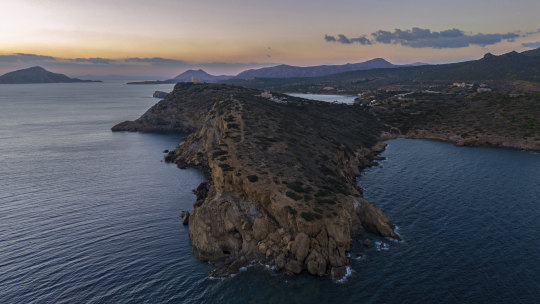

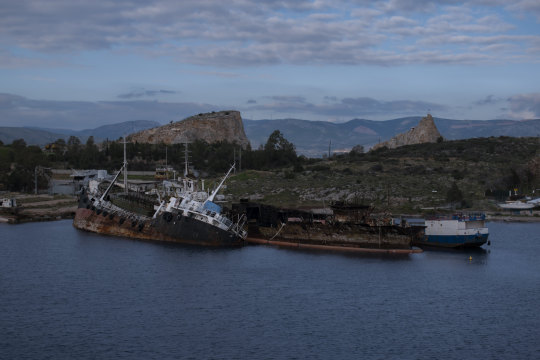
Aerial photography, Greece (2) (3) (4) by George Christou
Via Flickr:
(1) A drone photo of Nafpaktos old town and castle
(2) Drone photography above Sounion coastline
(3) A small port in Attica, Greece which hosts mostly fishing boats.
(4) A port in where ships retire
0 notes
Photo

#Aitoliko is a town in Aetolia-Acarnania, West Greece‼ 📸 @d.tzankatian #goodmorning #folowers #thankyou https://www.instagram.com/p/ClTL0tesEUq/?igshid=NGJjMDIxMWI=
57 notes
·
View notes
Text
What I think is pretty interesting though is like -
On the one hand, Penelope clearly must be in Sparta at least around the time of Helen being courted/the competition for her.
On the other, with a little digging you realize at least two of her (half-?)brothers are associated with the region Acarnania, to the west of Aetolia (where Pleuron, Leda's birth city is). Those two brothers are mentioned by Strabo, so it's nothing early, but it's still curious because if you acknowledge this you have to connect the two situations somehow.
2 notes
·
View notes
Text
Saganaki Cheese — An Essential Ingredient in a Variety of Greek Dishes

Saganaki cheese is an essential ingredient in a variety of traditional Greek dishes. This sheep’s milk cheese is similar to the basket cheese that is made in Aegean Turkey. It is used in traditional dishes such as moussaka, stuffed grape leaves, and fried saganaki. If you can’t find saganaki cheese, try Manouri or halloumi cheese instead.
Authentic Greek recipes use saganaki cheese
Most saganaki recipes call for swiss gruyere, but you can also use other semi-hard cheeses. Halloumi and manouri cheeses work well in saganaki, which is a fried Greek cheese. Saganaki should be cut about 1/2 inch thick, and is typically served as a dessert. If you’re not familiar with Greek cheese, you can substitute soft American cheeses such as Monterey Jack or provolone, or even young Pecorino.
Authentic Greek cheese frying recipes call for firm, shredded cheese, such as graviera. Halloumi cheese is commonly used in Cyprus, while mastello is preferred on Chios. You can also substitute pecorino romano or pecorino. The most important thing to remember when making Greek cheese frying is to get the oil hot! Add flour, fresh black pepper, and other ingredients, like chopped onion, if desired.
Kefalograviera is a sheep’s milk cheese
Kefalograviera is essentially a hard table cheese. It is made from sheep’s milk and is often used in a traditional Greek dish called Saganaki. It is made in Western Macedonia, Epirus, and Aetolia-Acarnania. The cheese is made in small wheels and is aged for about three months before it is sold. It is typically sold in wedges or rounds.
The best way to store Kefalograviera is to store it in the refrigerator. Remove it about an hour before serving. The cheese can be kept in the fridge for up to six months, but you should remove it from the fridge an hour before using it. To store it properly, wrap it in parchment or waxed paper and put it into a plastic container. If you find that the cheese has developed a mold spores, cut them out with a knife.
Despite the potential benefits of enriched dairy products, a study has found that the bacterial microbiota of Kefalograviera is highly affected by the type of dairy ewe fed. The results of this study suggest that an omega-3 enriched diet is beneficial for the health of sheep. While this is not a cure-all, it might help improve the dairy industry’s bottom line by improving its products and the lives of sheep and goats.
Manouri or halloumi cheese is a popular substitute
If you’re not a fan of saganaki, or don’t have access to it, you may want to consider manouri or halloumi cheese as an alternative. This cheese has similar flavor profiles and is often used as a substitute for the original Greek cheese. Manouri is made from whey left over from making feta cheese, and the curds are then dried and packaged in cylinders. Unlike feta, manouri doesn’t have an outer rind or solidified casing. Usually sold in log shapes or as pieces cut from the log, manouri has a low fat content, and is a delicious alternative.
Another popular substitute for saganaki is feta. Both types of cheese have a similar texture, but are not the same. Feta is slightly more sour and has a more pronounced flavor, but can still be used in place of halloumi. Manouri is a semi-delicate Greek cheese that’s more like a mozzarella than halloumi. Manouri is a popular alternative because it’s easy to find, and is also similar to halloumi in taste.
Flambe saganaki cheese
To flambe saganaki cheese, first prepare the cheese. To do this, use a non-stick pan and add olive oil. Sprinkle with cracked black pepper. Heat over medium until the cheese turns golden brown. Add brandy and allow it to sit for a few minutes before removing it from the pan. Once done, serve the saganaki hot or warm with a side of Greek salad or greens.
Then, transfer the melted cheese to a plate. Saganaki means small pan. The cheese then gets a crispy crust on the outside and soft, melty interior. This cheese dish is best served with lemon juice to cut through the richness. Flambed with brandy, this cheese appetizer has a distinct taste all its own. Serve it with a crisp salad and crusty bread.
2 notes
·
View notes
Text
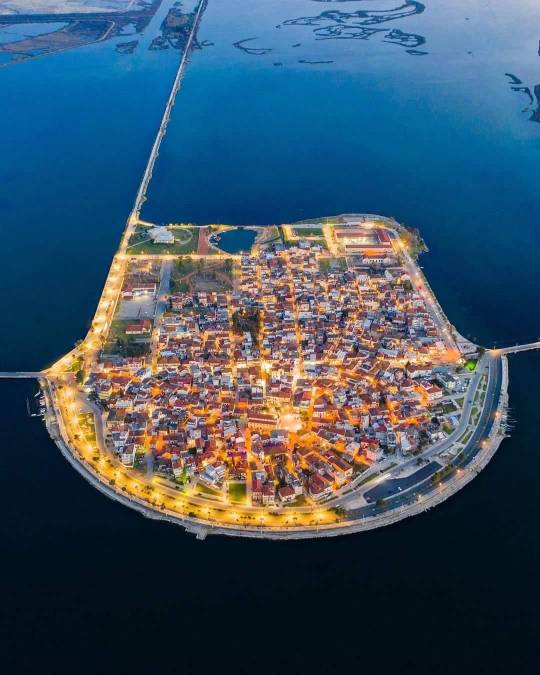
Aitoliko is a town in Aetolia-Acarnania, West Greece
1 note
·
View note
Photo

abandoned medical centre in Kremasta; Aetolia-Acarnania, Greece, 2015
#my art#art#photography#photographers on tumblr#greek photographers#greece#aetolia-acarnania#central greece#travel#colours#melancholy#abandoned#old#retro#lomo#chair#old objects
33 notes
·
View notes
Note
Hi! idk if this is a weird question and you totally don't have to answer but i'm making a character who's Greek and i was going to give him green eyes, but i'm not sure if that's a thing? like, how often do Greek people have blue or green eyes? or should i give him brown eyes to represent the majority? also; what are common features on Greek people that you would say he should have?
I think any eyecolor works, but I guess it depends on the period and location your character is from?
My dad is from Aetolia-Acarnania and he and my sister have green-brown eyes. Green eyes are uncommon but it's a northwest thing maybe? Idk we don't see it a lot around the islands tbh
It depends on the period too because different parts of Greece were occupied by different people at different times. Like the British, the Venetians, the Ottomans etc. So you could add that as a backstory but honestly I wouldn't, I don't think people are over the pain some of those events caused.
22 notes
·
View notes
Photo

Grammeni Oxiá is a village in Mountainous Nafpaktia, surrounded by forests. Its name means “a beech like a painting”.
Photo by @stef_greece on Instagram.
#greece#europe#fall#autumn#travel#wanderlust#forest#woods#nature#trees#fallen leaves#grammeni oxia#orini nafpaktia#central greece#aetolia-acarnania#sterea hellas#mountainous nafpaktia#mainland
78 notes
·
View notes
Text
Note: The characters presented there are inspired by @allbeendonebefore's work and they have no intention to mock you, rather to entertain you.
Hello again. In my previous post, I talked about the regional unit of Aetolia-Acarnania. Here, I'm gonna present some of its important cities. Starting with the capital itself…

Artistic choices: As with Aetolia and Acarnania in the previous post, I based her design from one of my aunts. Specifically, I made her tall with brown hair. I originally intended her to have scars all over her body, from the three Sieges (that we are going to talk about later) that took place in her city, but I ended up finding this idea over-the-top and she has fair skin. She is famous as a fish farming site, so I gave her clothes that make it easy for her to access waterz like boots, shorts and a plain t-shirt.
Messolonghi (as I prefer to call her) is the capital of Aetolia-Acarnania, despite not being its biggest city (Agrinio holds this position). Think of it like Edmonton and Calgary's case in Alberta, Canada.
It's one of these greek towns that has associated itself with the Greek War of Independence, a War that lasted from 1821 to 1829, and ended with the Greeks receiving their freedom from the Ottoman Empire.
To name, during that war, three dramatic sieges took place there. The first two (in 1822 and 1823) were unsuccessful, but the third was devastated for the Messolonghians.
Let's start from the beginning. Messolonghi is a city protected by a chain of small islands and its lagoon from the sea, and by a wall and the marshy terrain from the landward side. Additionally, it emerged as a fishing and trading settlement. All these made her a place in a vital position and that's why the Ottomans attacked her.
The reason the first two sieges were unsuccessful was due to the fact that the Ottomans focused solely on cutting connections and food from the land and thanks to the town's history as as a fishing and trading settlement, the residents could supply themselves via the sea route.
On the third time, however, the Ottomans came with a much stronger navy, cutting connections from both the land and the sea. The siege lasted till the spring of 1826. The Greeks had grown devastated and weak after a long and suffering winter without supplies, even going as far as to eat dogs, cats and mice from the streets. The residents looked skeletal and you could see corpses on the ground.
It was then that the Messolonghians decided to burst out of the gates and attempt to lead the women and children to safety. Meanwhile, those who were dying and/or too sick were piled into houses packed full of gunpowder to blow themselves up when the Ottomans arrived to kill them.
On the night of 10 April, the Greeks realised their plan, having to face an army of Ottomans who were informed about their escape. 10,000 emerged. Only 1,000 Greeks made it alive.
It's one of the most popular and important event of the Greek War of Independence, as it moved thousands of Philhellenes across the globe, who came to support the Greeks and it inspired works of art, like "The Free Besieged", a poem written by our national poet, Dionysios Solomos.
Here's an unofficial English translation I found on the Internet:
A silence as prevalent as death reigns over the plains
a bird speaks, takes a seed, and the mother envies it.
The famine blackened the eyes. The mother is swearing onto the eyes.
The good soldier from Souli stands aside and cries:
"Lone dark rifle, why do I hold you in the arm,
for you are a burden to me and even the Muslim knows ?"
April and Eros are dancing and laughing together,
and as many blossoms and cores come out, so many weapons enclose you.
A small white hill of sheep yells in movement,
and gets thrown deep within the sea again,
and merges its vast whiteness with the beauties of the sky.
And into the waters of the lake, which it reached in fast,
a blue butterfly played with its shadow,
that felt its sleep within the wild Fleur-de-lys.
The petite worm is also coming on its age.
The nature is magic and a dream in beauty and grace,
the black stone and the dried up grass are vast golden.
It spills itself with a thousand faucets, it speaks on a thousand languages:
"Whoever dies today will perish a thousand times."
The theme of the poem is about temptation and it's easily obvious on the last lines, where beautiful euphemisms are used to describe nature. One could ask "Who would want to die in such a beautiful day?". But as history (or to be more precise, this episode) showed, the Greeks preferred death over becoming slaves of the Ottomans.

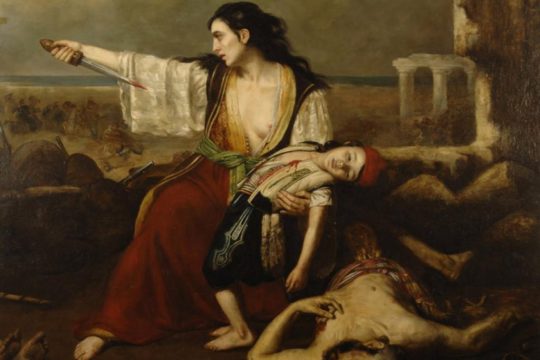
In this drawing, you can see a mother about to commit suicide after having killed her kid (which is seen lying in her left arm), in an attempt not to end in the arms of the Ottomans.

The Garden of Heroes, a place dedicated to important military and political figures of the city, particularly from the Greek War of Independence.
Oh, I forgot to say that Lord Byron, a famous English poet and Philhellene died there.
Honestly, I feel like I talked too much about the Greek War of Independence…
On an unrelated note, she's in a rivalry with Agrinio, the biggest city and Economic Centre of Aetolia-Acarnania, but we will discuss it later (honestly, if you're following me for a while or if you've read my #athens and thessaloniki adventures posts, you will have noticed that we Greeks don't exactly get along)…

Artistic choices: I based her body type and hair from my mom, as she grew up in a small village near Agrinio. My mom doesn't smoke, but I made her a smoker, since, as I stated in the fun fact above, Agrinio is known across Greece for its tobacco production. My mom has participated in this when she was a little girl and she has a lot to tell me about it… Plus, she isn't redhead, she's actually brunette, she just likes to dye her hair red (just like my mom).
Enjoy a video depicting the production of tobacco. My mom showed it to me and said its pretty accurate to what she did when she was little.
https://youtu.be/E-F_iOQ88Ds
Agrinio is the biggest city of the regional unit of Aetolia-Acarnania and its Economic Centre. It's not the capital however. It's a similar case like the one with Edmonton and Calgary in Alberta, Canada.
It has acquired one of the worst reputations among greek cities, as a city that you "should avoid at all costs" and its residents as people you "should avoid at all costs". Here, I'm going to dissolve this ugly reputation or at the very least, try to justify it.
Agriniots in general are seen as "savages" that speak terribly greek. The reason for this is because, unbestknown for the majority of non-Agriniots, the people who claim to be from Agrinio aren't from Agrinio. They're from nearby villages, they just say Agrinio to help the listener locate the place. And because villagers have this reputation as being uncivilised and because every village speaks with a different accent, Agriniots earned the aforementioned reputation.
They're also in a rivalry with Messolonghi. The best way I can describe it is like this:
Agrinio: I'm the biggest city and Economic Centre of this regional unit! Why is SHE the capital?!
Messolonghi: I deserve this title because I'm an historic city!
Etc, etc

Artistic choices: He's a lobster, because his name "Astakos" in Greece means lobster and I thought it was funny. However, I don't know how he got that name. I searched information online and I didn't find anything about Astakos being famous for his lobster farming.
Nothing to say, except that it's a nice village to stroll and have dinner if you ever find yourself in Greece. Plus, I liked this building when I visited it.

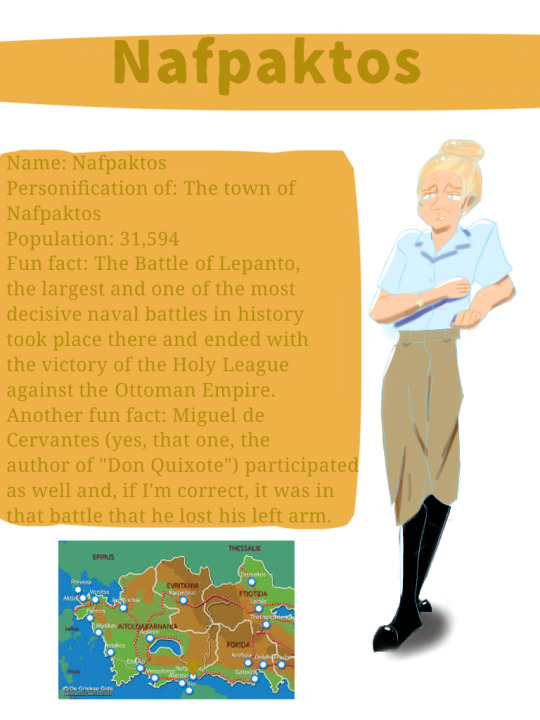
Artistic choices: When most foreigners think about us Greeks, they think of slightly tanned people with brown or black hair. This is to a great extent true. For this reason, I wanted to create a character that looked less "Greek" and more "foreigner" just for the fun of it. She would be woman, have blonde hair (for the record, there're Greeks who have blonde hair, but there're huge brown hues on it. I wanted her hair to be pure blonde) and blue eyes. And that's how Nafpaktos came to be!
During the time she was under the Venetian Republic, she was named Lepanto. It's also the place where the Battle of Lepanto happened. You probably have heard it at least one in your life, as it's one of the most famous naval battles, and if you're Spaniard, it rings a bell in your ear.
It's considered of vital importance to the Europeans, since it marked the turning-point of Ottoman military expansion into the Mediterranean. Miguel de Cervantes, whom you might know as the author of Don Quixote, participated, where he severely injured his arm. In fact, there's a statue of him lifting his right arm, the arm which he used to write several famous literature works.
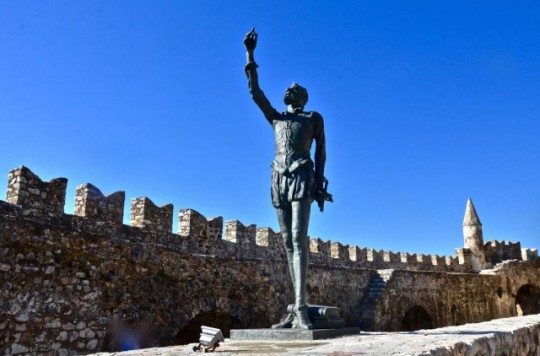
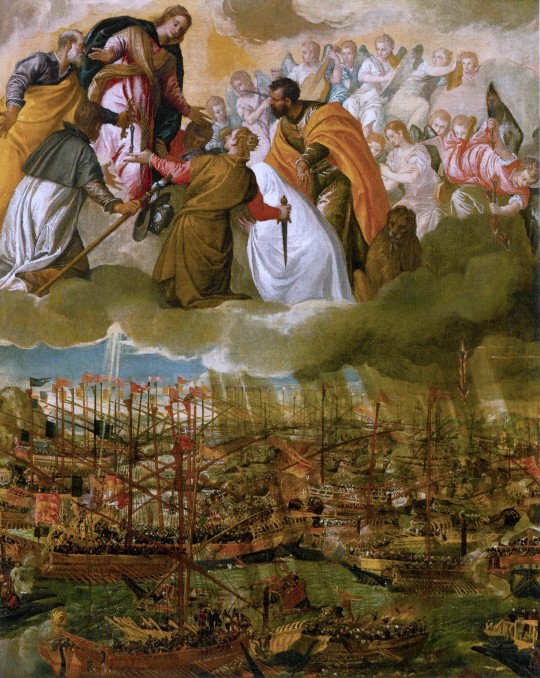
She's also the second biggest city of Aetolia-Acarnania after Agrinio.
That's all I have to offer. Have a good day (or night depending on what time exactly you're reading this post) 😘. The next post is gonna be the last about the Aetolia-Acarnanian Gang!
Sources:
A small part where I list all the sources of my information:
For Aetolia-Acarnania:
https://el.m.wikipedia.org/wiki/%CE%9D%CE%BF%CE%BC%CF%8C%CF%82_%CE%91%CE%B9%CF%84%CF%89%CE%BB%CE%BF%CE%B1%CE%BA%CE%B1%CF%81%CE%BD%CE%B1%CE%BD%CE%AF%CE%B1%CF%82
https://el.m.wikipedia.org/wiki/%CE%99%CF%83%CF%84%CE%BF%CF%81%CE%AF%CE%B1_%CF%84%CE%B7%CF%82_%CE%91%CE%B9%CF%84%CF%89%CE%BB%CE%AF%CE%B1%CF%82
https://el.m.wikipedia.org/wiki/%CE%99%CF%83%CF%84%CE%BF%CF%81%CE%AF%CE%B1_%CF%84%CE%B7%CF%82_%CE%91%CE%BA%CE%B1%CF%81%CE%BD%CE%B1%CE%BD%CE%AF%CE%B1%CF%82
https://en.m.wikipedia.org/wiki/Aetolia-Acarnania
https://en.m.wikipedia.org/wiki/Aetolia
https://en.m.wikipedia.org/wiki/Aetolian_League
https://en.m.wikipedia.org/wiki/Acarnania
For Messolonghi:
https://en.m.wikipedia.org/wiki/Missolonghi
https://en.m.wikipedia.org/wiki/Third_siege_of_Missolonghi
https://en.m.wikipedia.org/wiki/First_siege_of_Missolonghi
https://en.m.wikipedia.org/wiki/Second_siege_of_Missolonghi
https://el.m.wikipedia.org/wiki/%CE%9C%CE%B5%CF%83%CE%BF%CE%BB%CF%8C%CE%B3%CE%B3%CE%B9
https://el.m.wikipedia.org/wiki/%CE%88%CE%BE%CE%BF%CE%B4%CE%BF%CF%82_%CF%84%CE%BF%CF%85_%CE%9C%CE%B5%CF%83%CE%BF%CE%BB%CE%BF%CE%B3%CE%B3%CE%AF%CE%BF%CF%85
For Agrinio:
https://el.m.wikipedia.org/wiki/%CE%91%CE%B3%CF%81%CE%AF%CE%BD%CE%B9%CE%BF
https://en.m.wikipedia.org/wiki/Agrinio
For Astakos:
https://en.m.wikipedia.org/wiki/Astakos
https://el.m.wikipedia.org/wiki/%CE%91%CF%83%CF%84%CE%B1%CE%BA%CF%8C%CF%82_%CE%91%CE%B9%CF%84%CF%89%CE%BB%CE%BF%CE%B1%CE%BA%CE%B1%CF%81%CE%BD%CE%B1%CE%BD%CE%AF%CE%B1%CF%82
For Nafpaktos:
https://el.m.wikipedia.org/wiki/%CE%9D%CE%B1%CF%8D%CF%80%CE%B1%CE%BA%CF%84%CE%BF%CF%82
https://en.m.wikipedia.org/wiki/Nafpaktos
https://en.m.wikipedia.org/wiki/Battle_of_Lepanto
https://iaitoloakarnania.gr/2020/04/to-agalma-toy-thervantes-sti-naypakto-o-don-kichotis-kai-i-schesi-toy-me-tin-ellada/
#aph oc#aph: Messolonghi#aph: Missolonghi#hws Messolonghi#hws Missolonghi#aph ocs#aph: Agrinio#hws Agrinio#aph: Astakos#hws Astakos#aph: Nafpaktos#hws Nafpaktos#aata#athens and thessaloniki adventures
4 notes
·
View notes
Text

Lake Trichonida (Trichonis), Aetolia, Western Mainland Greece : Lake Trichonis it is the largest natural lake in Greece. Lake Trichonida is situated in the eastern part of Aetolia-Acarnania, southeast of the city of Agrinio and northwest of Nafpaktos. It covers an area of 98.6 square kilometres with a maximum length of 19 kilometres. Its surface elevation is 15 metres and its maximum depth is 58 metres.
20 notes
·
View notes
Text
Day 8 of 30 Days of Apollon
Variations on this deity (aspects, regional forms, etc.)
If we look at the cults of Apollon we can see that not only was he worshipped all over Greece but also Asia Minor (Anatolia), Cyprus (considered the Mediterranean), Egypt, and by the Gauls in France.
The etymology of his name causes much confusing as with slightly different spelling it seems to come from numerous places all over Greece.
Apollo (Attic, Ionic, and Homeric Greek: Ἀπόλλων, Apollōn (GEN Ἀπόλλωνος); Doric: Ἀπέλλων, Apellōn; Arcadocypriot: Ἀπείλων, Apeilōn; Aeolic: Ἄπλουν, Aploun; Latin: Apollō)
The name Apollo—unlike the related older name Paean—is generally not found in the Linear B (Mycenean Greek) texts, although there is a possible attestation in the lacunose form ]pe-rjo-[ (Linear B: ]𐀟𐁊-[) on the KN E 842 tablet.[4][5][6]
The etymology of the name is uncertain. The spelling Ἀπόλλων (pronounced [a.pól.lɔːn] in Classical Attic) had almost superseded all other forms by the beginning of the common era, but the Doric form, Apellon (Ἀπέλλων), is more archaic, as it is derived from an earlier *Ἀπέλjων. It probably is a cognate to the Doric month Apellaios (Ἀπελλαῖος),[7] and the offerings apellaia (ἀπελλαῖα) at the initiation of the young men during the family-festival apellai (ἀπέλλαι).[8][9] According to some scholars, the words are derived from the Doric word apella (ἀπέλλα), which originally meant "wall," "fence for animals" and later "assembly within the limits of the square."[10][11] Apella (Ἀπέλλα) is the name of the popular assembly in Sparta,[10] corresponding to the ecclesia (ἐκκλησία). R. S. P. Beekes rejected the connection of the theonym with the noun apellai and suggested a Pre-Greek proto-form *Apalyun.[12]
He also has many epithets from around the world so it is unclear where he was first worshipped.
My favourite epithet connects him to Welsh/ Cymraeg mythology which I also worship as lower gods who are part of the Hellenic/ Greek Gods retinue. (syncretism baby!)
Apollo Maponus. A god known from inscriptions in Britain. This may be a local fusion of Apollo and Maponus.
Maponos surfaces in the Middle Welsh narrative, the Mabinogion, as Mabon, son of Modron (a similar character in Welsh literature is Mabon son of Mellt, who may in fact be the same as Mabon son of Modron), who is herself the continuation of Gaulish Matrona (“Matronly Spirit”). The theme of Maponos son of Matrona (literally, child of mother) and the development of names in the Mabinogi from Common Brythonic and Gaulish theonyms has been examined by Hamp (1999), Lambert (1979), and Meid (1991). Mabon apparently features in the tale of a newborn child taken from his mother at the age of three nights, and is explicitly named in the story of Culhwch ac Olwen.His name lives on in Arthurian romance in the guise of Mabon, Mabuz, and Mabonagrain.
Considering his aspects he is rather a binary god, considering his epithets he represents both the good and the bad, for example:
He worshipped as the God of foreigners by sailers and a god of refugees but he is also the god of colonists and fugitives
He is a God of healing but also of the plague
He is a god of the arts and the learning of music but flayed the skin off a contester for believing they were better than him
He is worshipped as the ‘averter of evil’ but is also said to damn humans etc who go against him
The prophecies that his oracles give to worshippers would be difficult to understand, meaning that they would be carried out despite the persons best intentions to stop them.
He is also considered a God of Light which means knowledge, and that also can be bad and good because as you know, “where ignorance is bliss, 'Tis folly to be wise.” (18th-century ode by Thomas Gray)
More of Apollos Cults etc are below
Part 4: Cult of Apollo 1
Part 4: Cult of Apollo 2
Part 4: Cult of Apollo 3
Part 4: Cult of Apollo 4
Part 4: Cult of Apollo 5
Oracles of Apollon
General Cult
Attica, Southern Greece
Megaris, Southern Greece
Aegina, Southern Greece
Corinth, Southern Greece
Sicyon, Southern Greece
Argolis, Southern Greece
Laconia, Southern Greece
Messenia, Southern Greece
Elis, Southern Greece
Achaea, Southern Greece
Arcadia, Southern Greece
Boeotia, Central Greece
Euboea, Central Greece
Phocis, Central Greece
Aetolia, Central Greece
Acarnania, Central Greece
Leucas, Central Greece
Epirus, Northern Greece
Illyria, North of Greece
Thessaly, Northern Greece
Delos, Greek Aegean
Ceos, Greek Aegean
Lesbos, Greek Aegean
Chios, Greek Aegean
Samos, Greek Aegean
Chalcia, Greek Aegean
Rhodes, Greek Aegean
Thera, Greek Aegean
Troad, Anatolia
Teuthrania, Anatolia
Lydia, Anatolia
Caria, Anatolia
Lycia, Anatolia
Phrygia, Anatolia
Cyprus, Mediterranean
Egypt, North Africa
Campania, Southern Italy
Gaul, Southern France
#30 days of Apollon#dodekatheism#hellenic polytheism#hellenismos#hellenic pagan#for the love of apollo#for the love of the dodekatheon#ares is great#Hail King Zeus and Queen Hera#hermes is my god#Hades is great too#Hestia is a sweetheart#cymraeg polytheism#welsh polytheism#welsh myth#welsh folklore#welsh magic#iolo morganwg is most likely a fake#for love of Llyr#the children of darkness have my soul#30 days of deity devotion#30 days of devotion
5 notes
·
View notes
Text
0 notes
